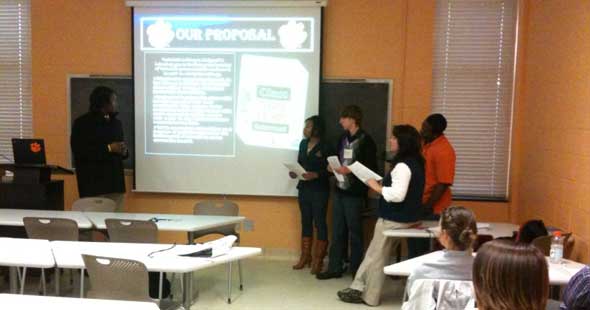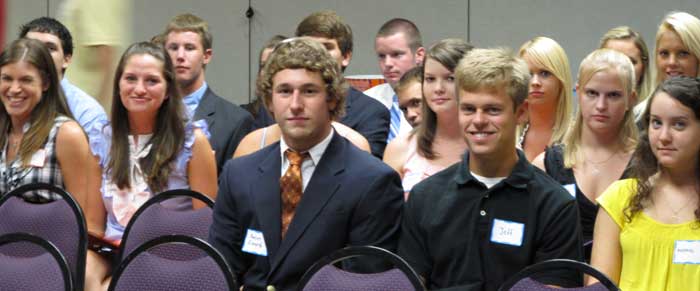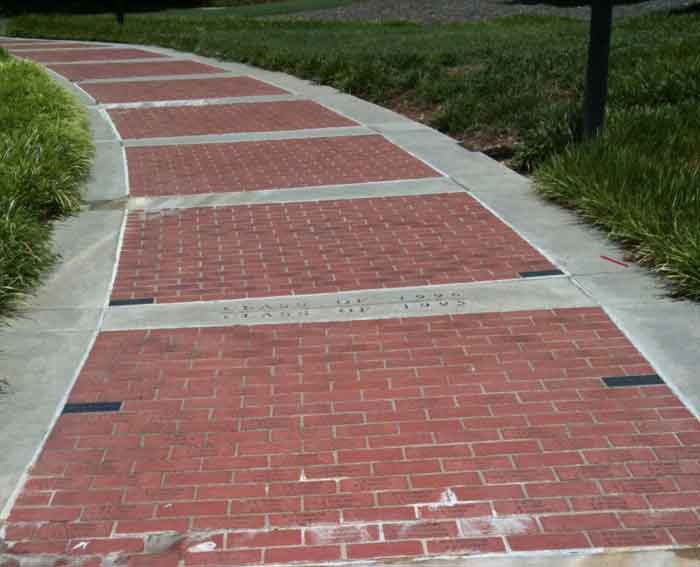Over the last few months I have been thinking about how the educational system here is South Carolina is changing and being forced to change. For the past few years, state funding for higher education has continued to drop substantially, each year forcing institutions of higher learning (that depend on state funds to operate) redefine how they support the demand. Well, there are two scenarios to this business proposition, raise the cost of a public education and/or seek more and more private funding. But before going down that thought process, I want to back up a few minutes.
Currently, my wife and I have been put in a position to support (both financially and parentally) my wife’s younger sister Susanna. She is a rising junior at the College of Charleston studying history. For the past two years, after Sarah and Susanna’s mother died of breast cancer, we have been helping Susanna navigate this convoluted financial-aid maze. From applying for expensive and inexpensive student loans to finally being eligible for grant monies, there is a serious conversation concerning “return on investment,” picking a educational path that is going to yield a direction post graduation that provides either a job paying a good wage or moving on to a graduate level education. But what is the ROI on a history degree? That conversation is soon to come.
We are just one of many families having this conversation right now, educational dollars spent should be taken just as seriously as a house purchase. When it is all said and done, one family can spend or borrow close to $7K – $10K per semester. These dollars add up and can come close to a $50K-$80K investment for a four year education. There is a serious business model behind providing loans for those to get a “quality” education. Think about it for a second…it is a like a revolving door behind the rising costs of education and the educational tracks being offered, but…are those tracks market driven?
As a side note, this blog post comes after a Saturday morning conversation with John Warner, he made me think more about market driven education.
More and more degrees are being offered, more and more dollars are being borrowed, more and more institutions are getting fatter, and now we have educational institutions moving away from market driven education. Each day I walk into another Panera Bread where the cashier working is a recent college graduate with a marketing degree and no job. Take a look at my wife’s MA in Professional Communications, she has yet to find a job using that degree. She worked in Manufacturing for close to five years becoming a strategic buyer and then became burned out and now teaching pre-schoolers. She was sold this degree track right out of undergrad at Lander on the fact she would find a high paying job, yet no one helped her in finding that job. It was not market driven…at the time. Side note, she and I graduated with our MA’s right after 911, the market was rock bottom.
So what are we seeing, educational institutions are starting to get back to basics. They will begin doing a couple of things. Identifying market driven degree programs that make sense and begin cutting programs that basically have no funding. As funds continue to decrease from the state, institutions like Clemson, USC, and other state supported schools will begin moving closer and closer to privatization. Now they will not become “Private” but they will be supported by private sources that have a vested interest in the types of programs that will be offered, supported with a pipeline of talent educated to fit that market need.
Clemson University was founded to provided the “Common Man” of South Carolina a technology and mechanical education to solve the agricultural problem in the state.
From Thomas Green Clemson’s Will
“My purpose is to establish an agricultural college which will afford useful information to the farmers and mechanics, therefore it should afford thorough instruction in agriculture and the natural sciences connected therewith — it should combine, if practicable, physical and intellectual education, and should be a high seminary of learning in which the graduate of the common schools can commence, pursue and finish the course of studies terminating in thorough theoretic and practical instruction in those sciences and arts which bear directly upon agriculture, but I desire to state plainly that I wish the trustees of said institution to have full authority and power to regulate all matters pertaining to said institution — to fix the course of studies, to make rules for the government of the same, and to change them, as in their judgment, experience may prove necessary, but to always bear in mind that the benefits herein sought to be bestowed are intended to benefit agricultural and mechanical industries.”
What type of education is necessary for the “Common Man” of South Carolina today? One of the “new technologies” is automotive innovation as seen with the creation ICAR. What other innovative, market driven, educational tracks will be created and be supported through private funds? This will be decided because in 2011, the federal stimulus money provided to subsidize the short fall for the 2010 academic year will be gone, and the fat will have to be trimmed and the deficit will have to be managed. You can read about the impact on Clemson in President Barker’s Blog.
Over the past 50 years, especially during the rising and falling economies, their has been an upward trend in expansion of higher education degree tracks. More and more diverse educational opportunities were created either by the market or a vision. More and more dollars were spent by families in a competitive battle between educational institutions. Now, we will be getting back to basics. Degree programs that have a path. General education requirements will be re-evaluated and the new professors will be ones of innovation, entrepreneurship, and educational economics (bring true business value to the classroom).
There was at one time in this great nation the opportunity to get a law degree or a medical degree without a four year bachelorate education…why not today. Is it time to reconsider the four year track for a BA or BS and combine with graduate level education? How can we put value back in the education we pay dearly for and work hard to obtain. Right now, some of it is not worth the piece of paper that it is printed upon, but rather the interest it is accruing for those student loan payments we pay each month. We are paying ours each month as Sarah walks into the daycare classroom each day.
What about my sister-in-law working on a BA in History? It is our hope she will keep on studying to become a librarian after getting a Masters from University of South Carolina. That separate degree was not created for the job market but for the institution’s margin. They are in that cyclic process of creating new degrees just to make money.
The higher education system in South Carolina is fat and needs some trimming, not only from a degree offering stand point, but also from a market position. There is a need to critically examine the type of high dollar education that is being taught and figure out what is really necessary to provide a market bearing education.
So on this line of conversation, there are groups that are wanting to capitalize educationally with this current market. Take Blue Cross Blue Shield of South Carolina. Here is a group that makes money off of transactions. They are a company of IT professionals and they build their systems on COBOL. They are in a position to aggressively seek the next wave innovators to fill positions that are being vacated through attrition. The problem, it is not cool to go into “IT” anymore and the educational systems are not teaching COBOL. So Blue Cross Blue Shield of South Carolina has teamed up with educational institutions like University of South Carolina, Clemson, and others along with IBM to re-shape the perception and educational tracks for the world of “IT”. There is a market need and there is value in teaming up with high education to shape curriculum so that the Blue Cross Blue Shields of the world can capitalize on the new emerging talent. This entity is know as the Consortium for Enterprise Systems Management and is based in Columbia, SC. This group is a marketing engine working with groups to change the face of “IT” and educate and recruit the new talent but educate and reshape our educational system from K-12 to higher education.
So ask yourself, if you had to do it all over again…what would you study? Would you study your passion or what the market would bear. Maybe it is a combination of both, but it is time to shift that conversation back to where there is a need in the market for job opportunity and growth. Or…is a higher education truly standardized just for jobs or theoretical education? The pendulum is swinging back and it is time to figure out what is up next for our new leadership. That leadership are those students, our children, our future, our legacy. Remember, it is up to us to help shape our future…the decisions we make now will shape how we, our children, and our children’s children will live one day.




